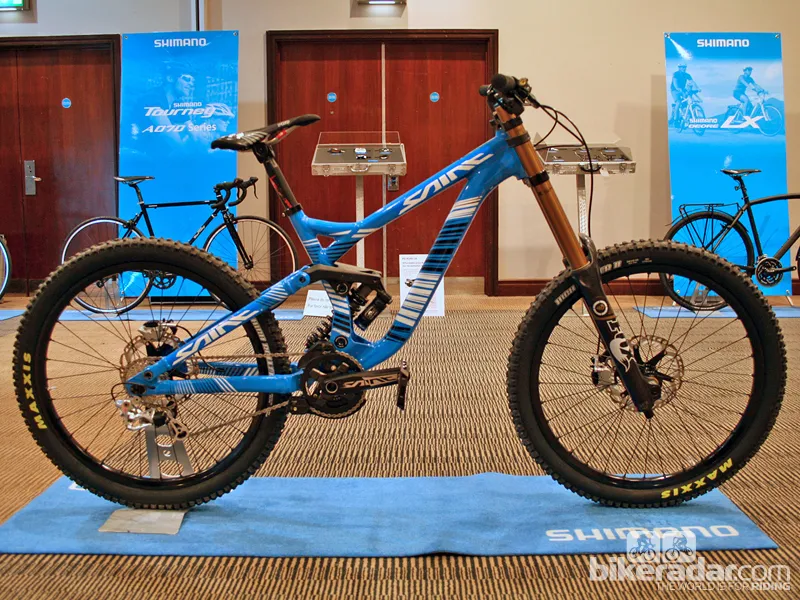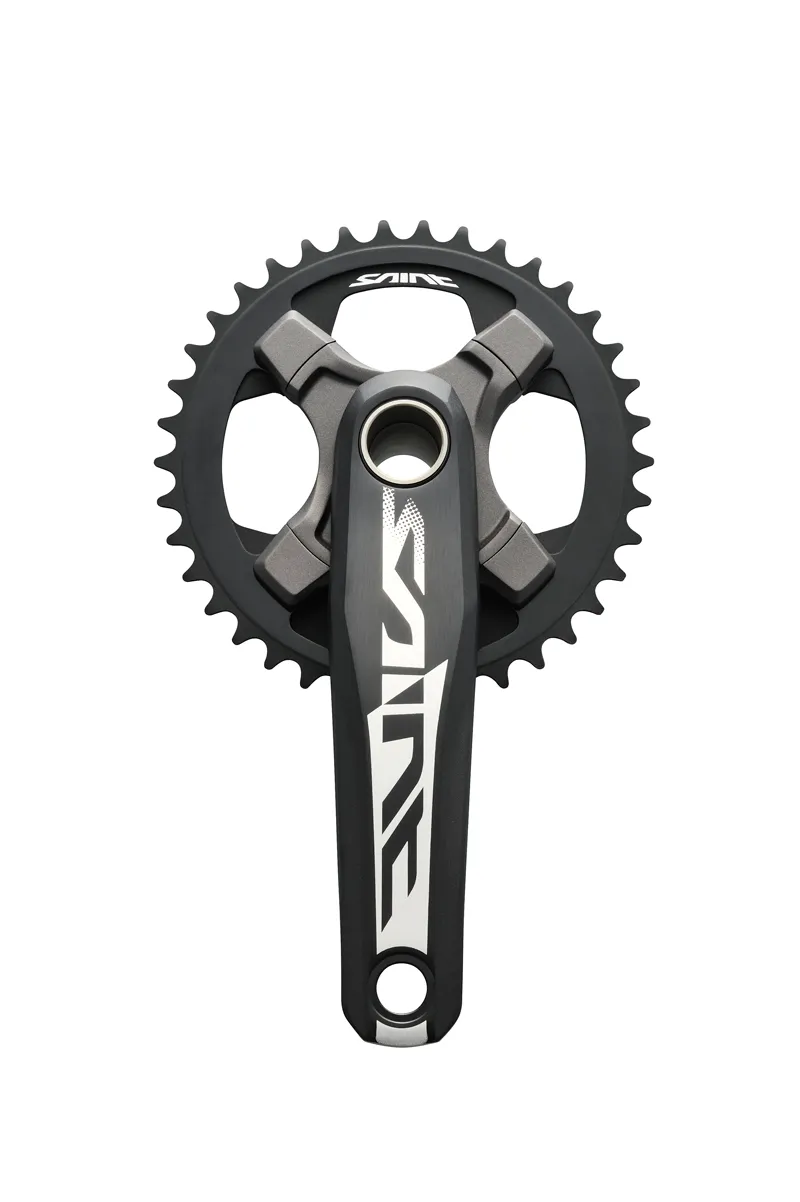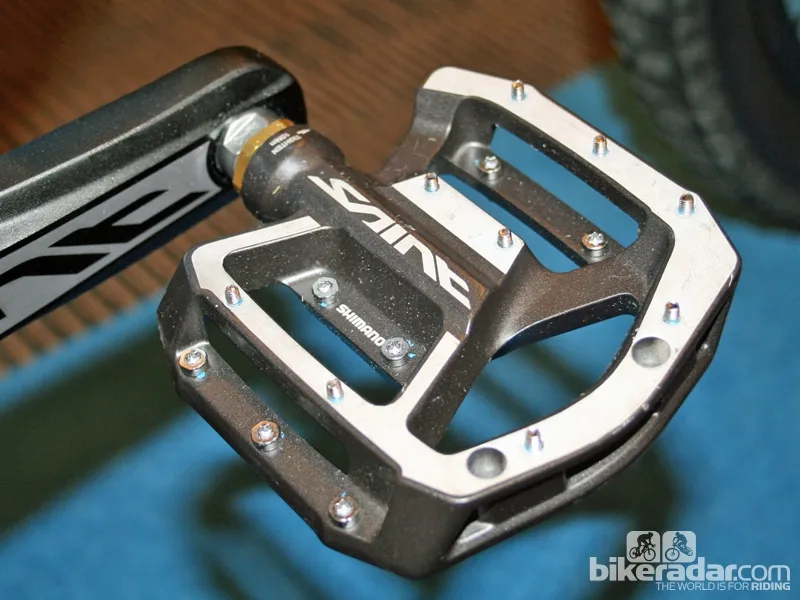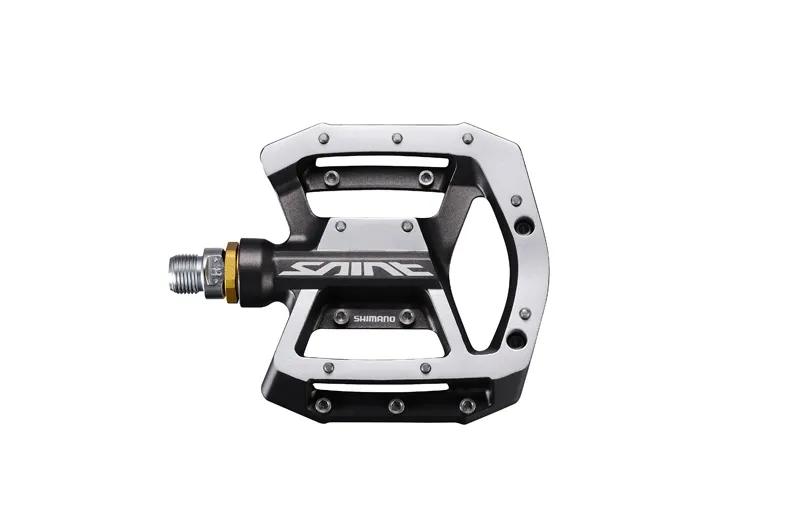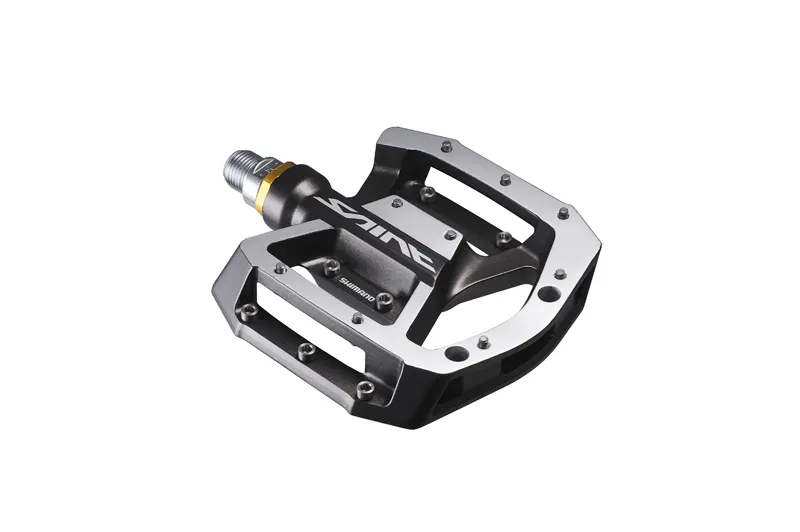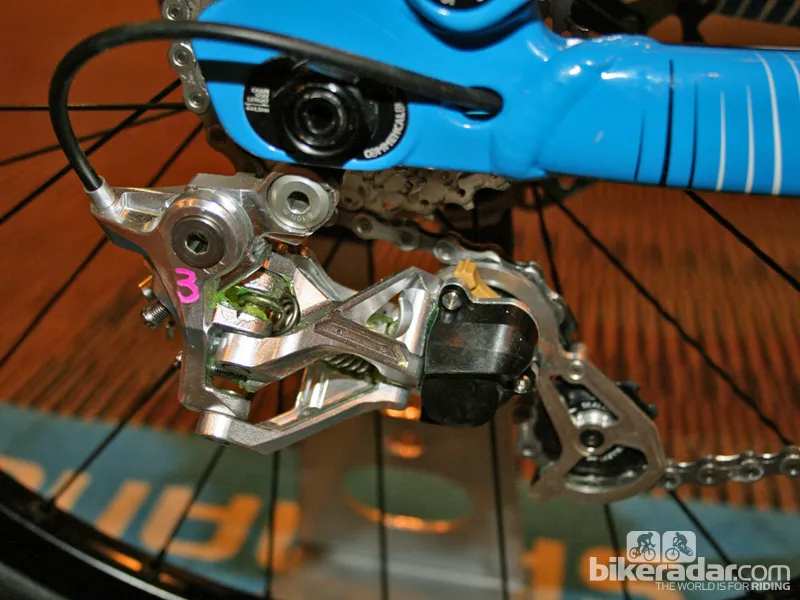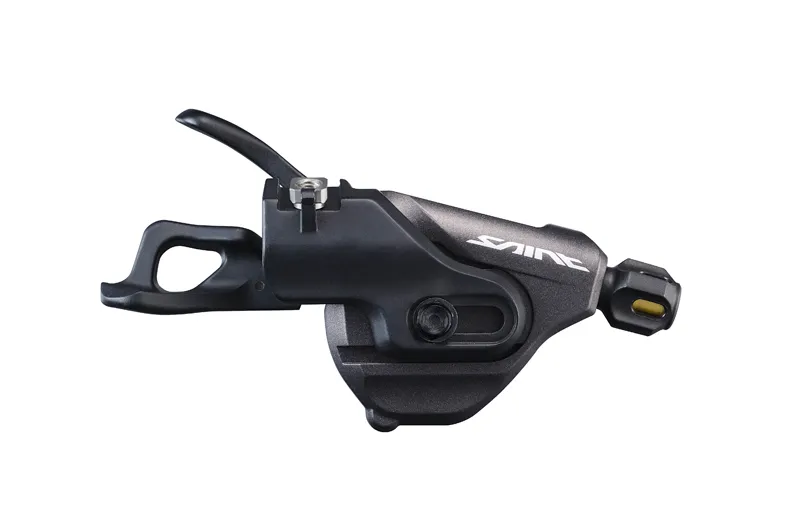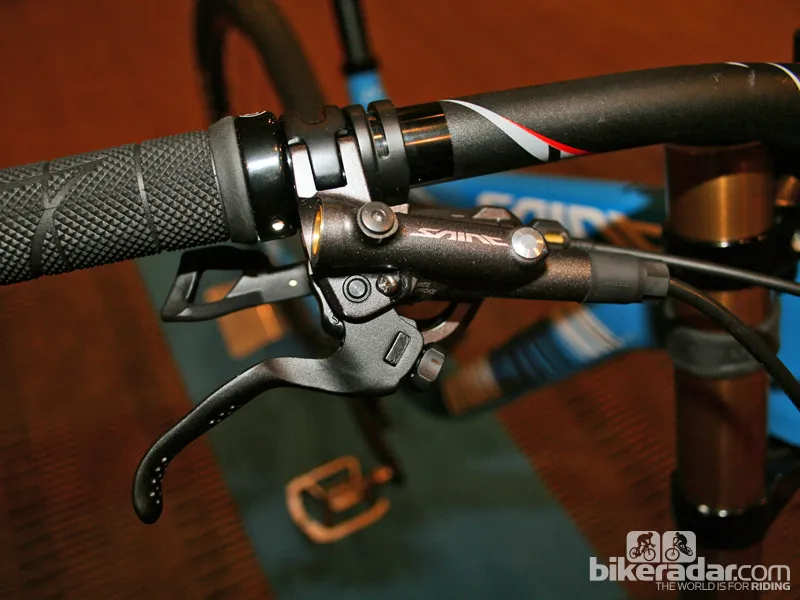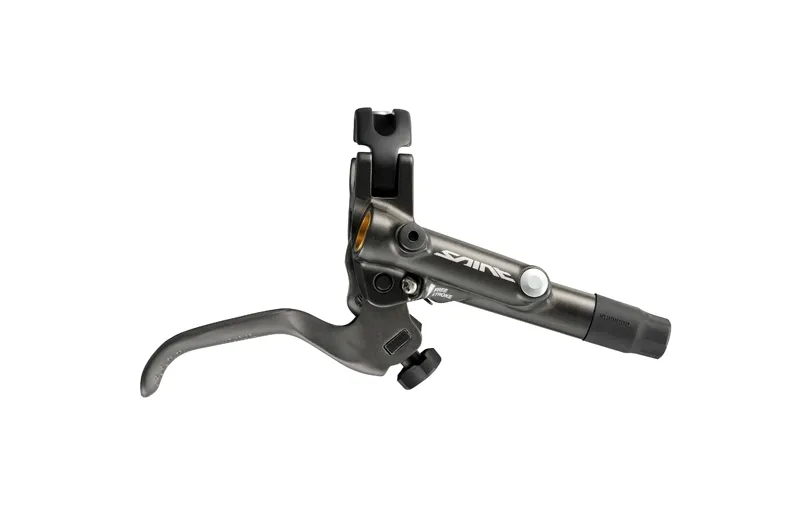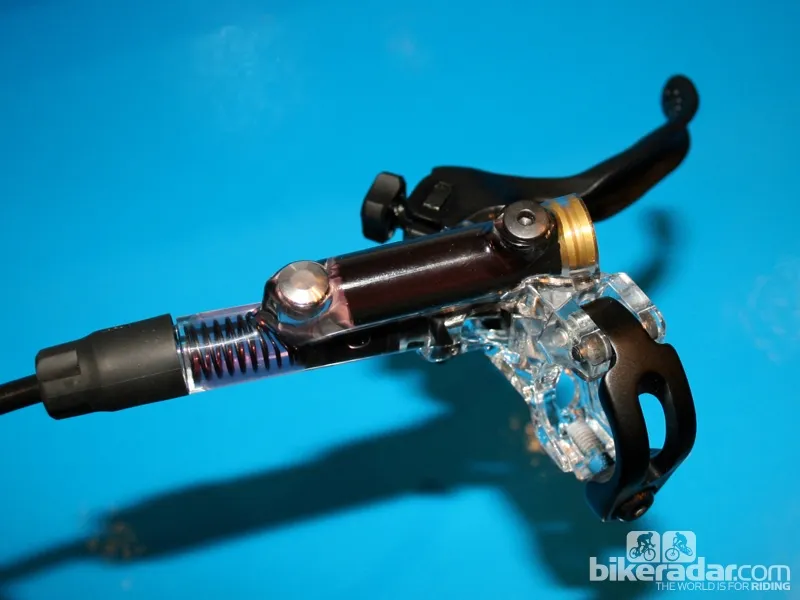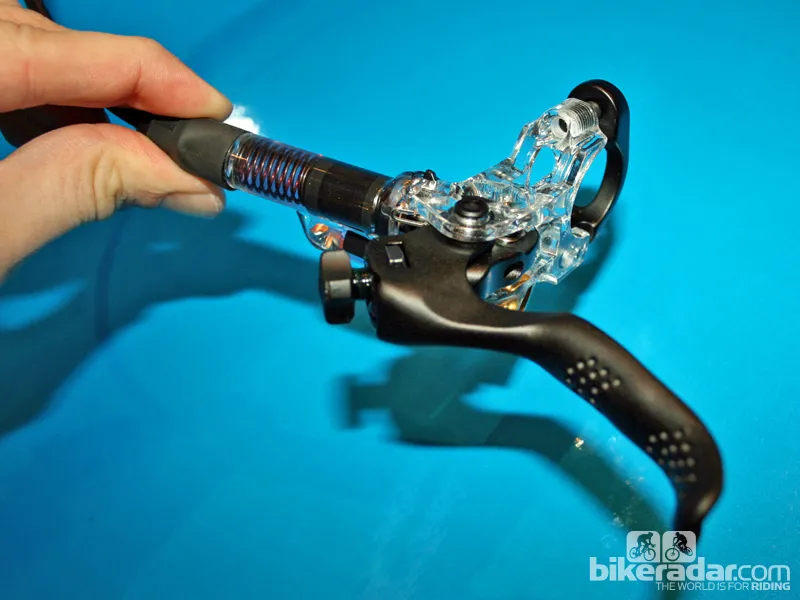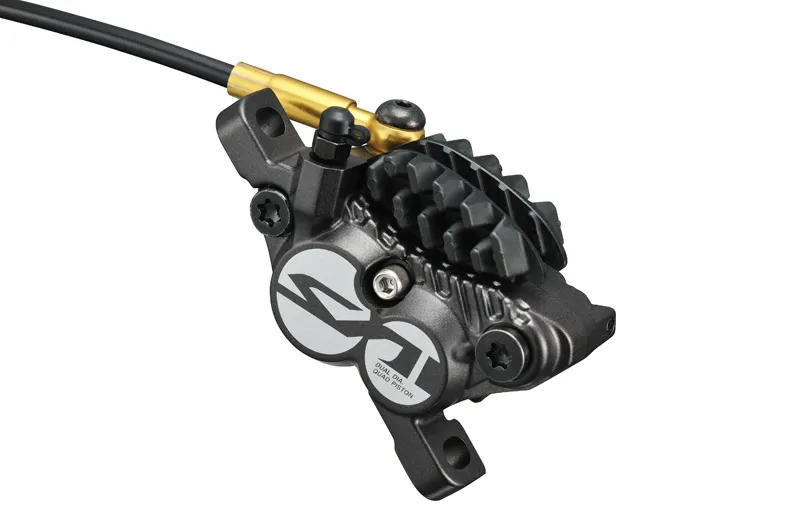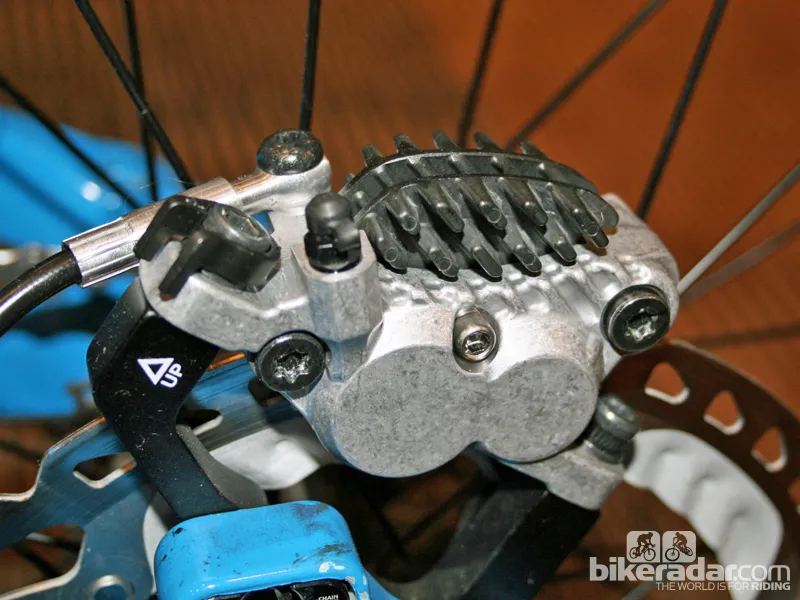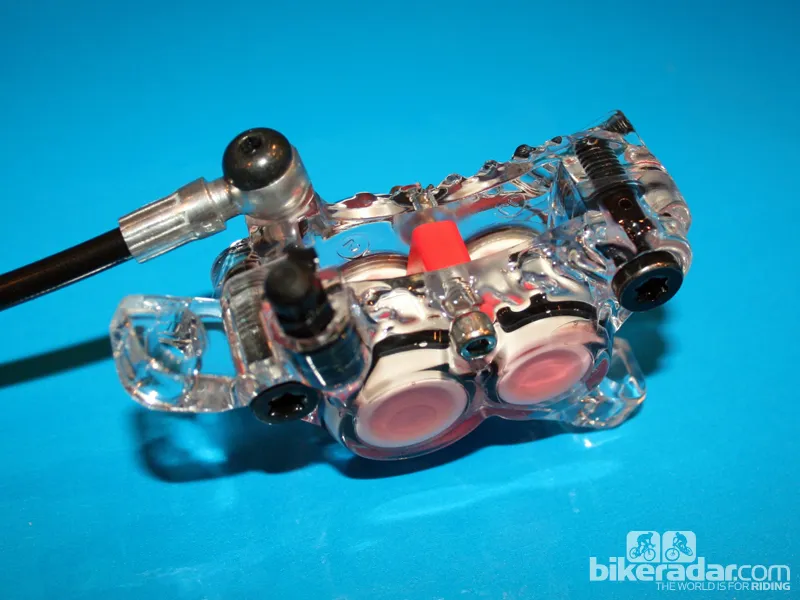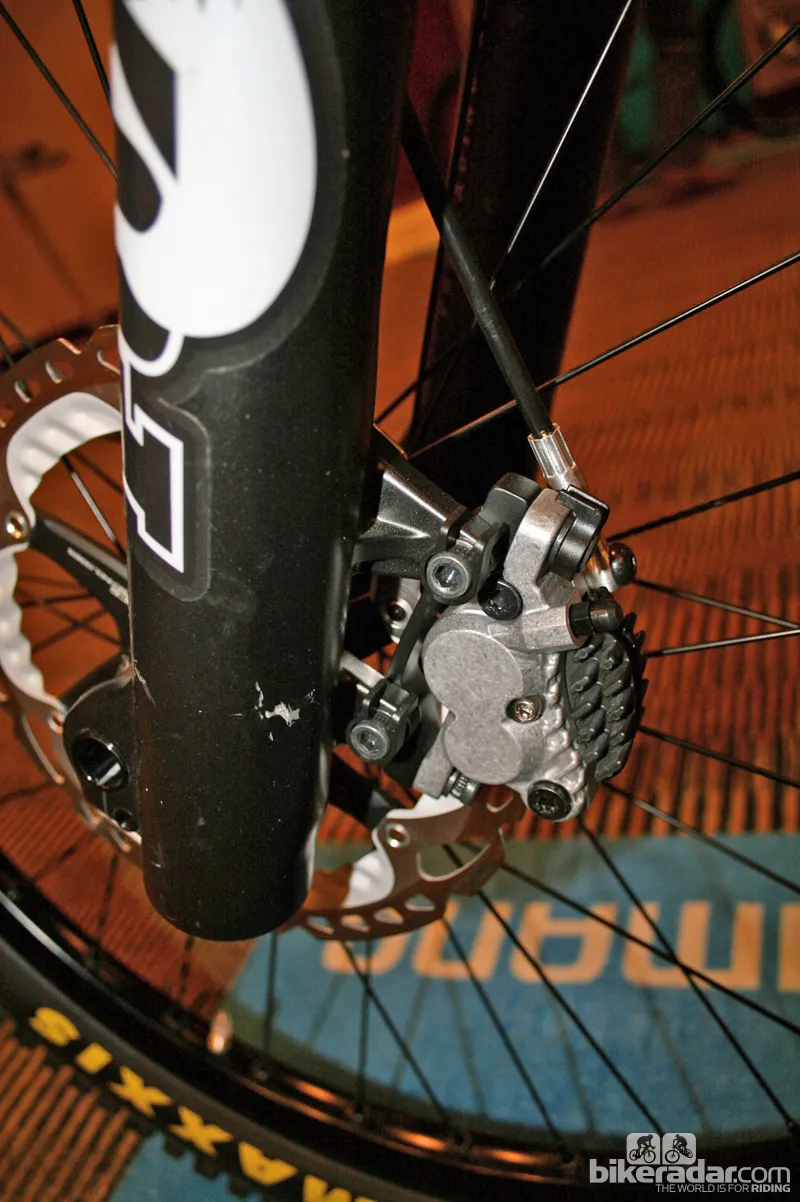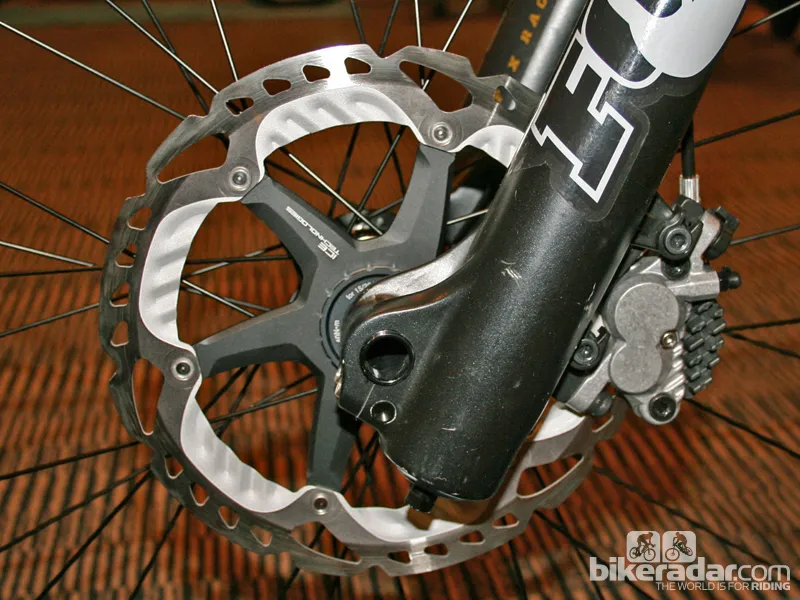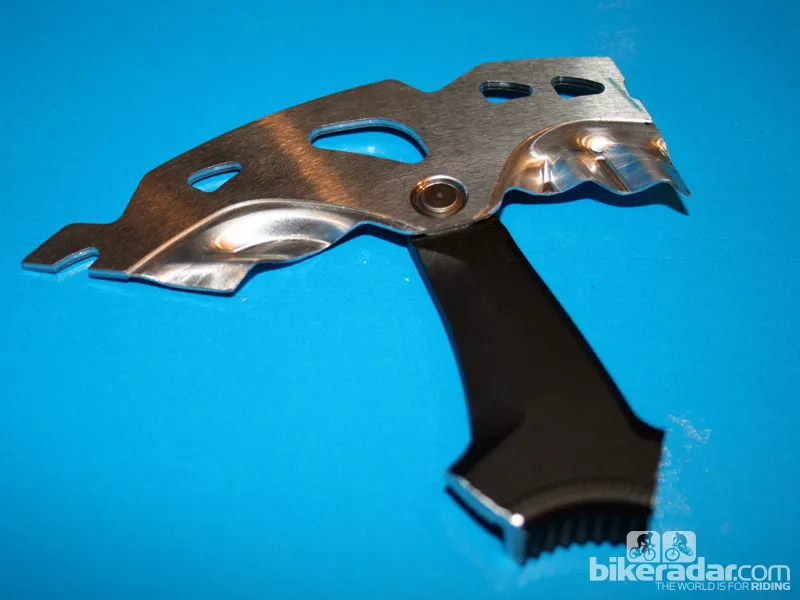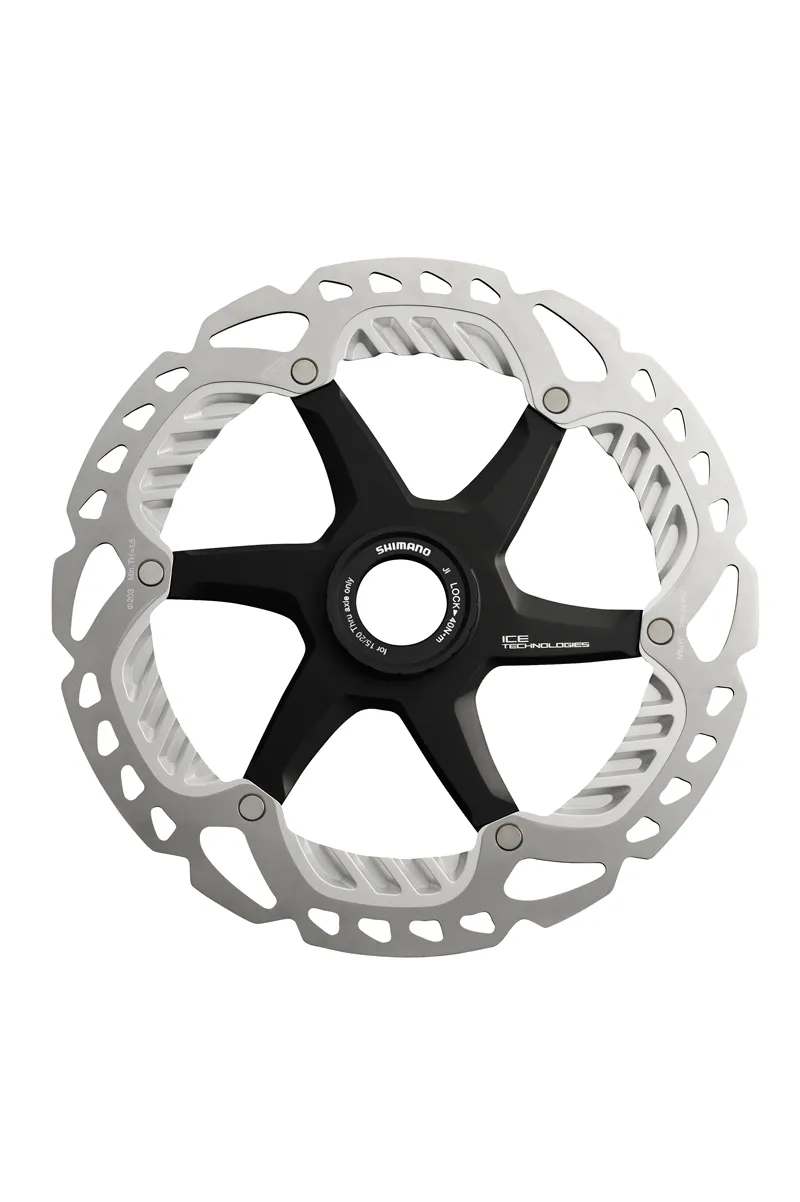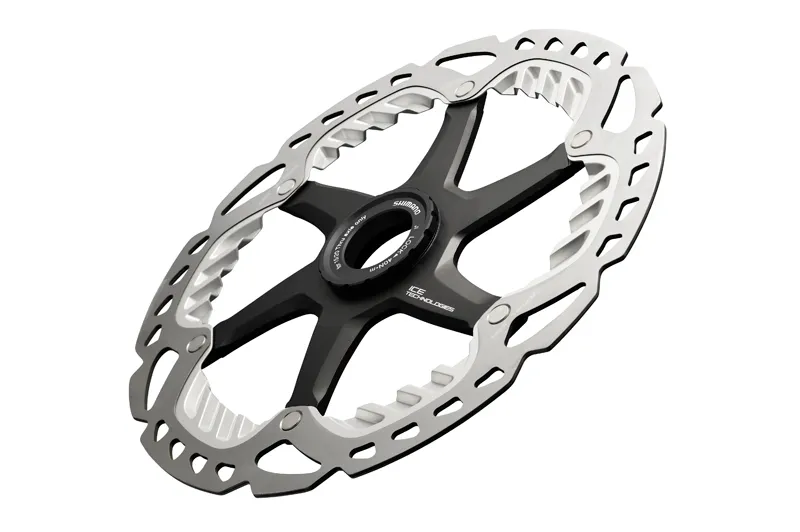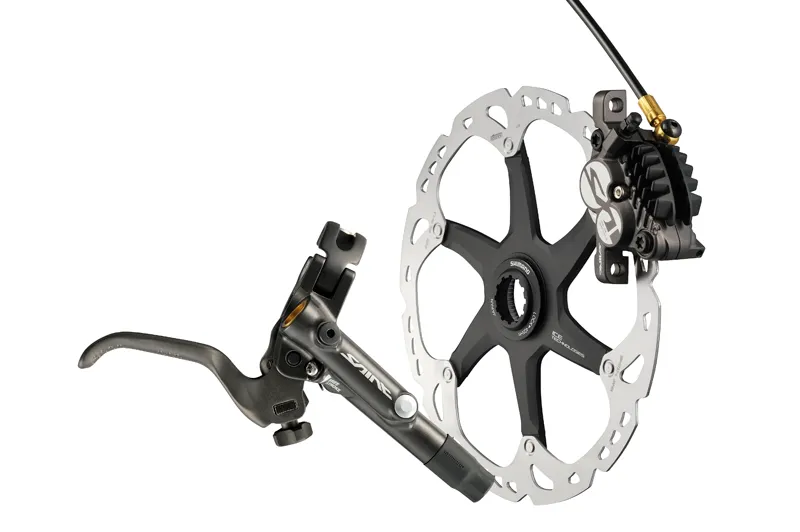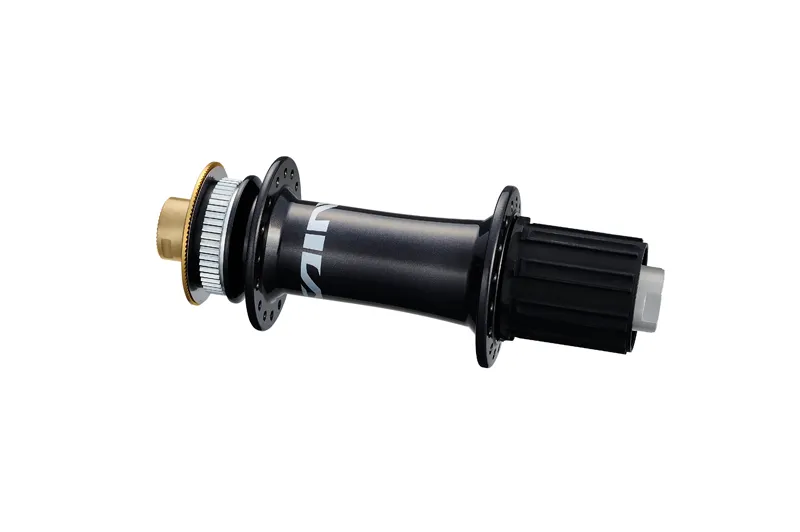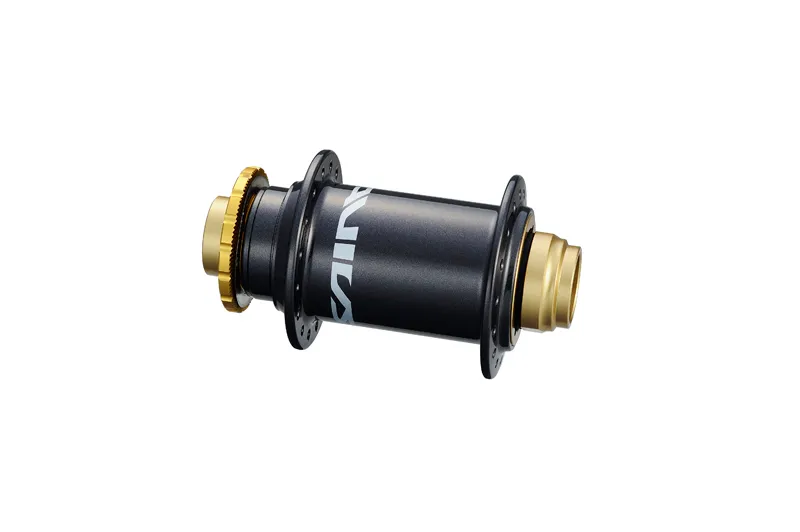In the past four years a lot has happened in downhill racing. Bikes have got several pounds lighter, live streaming has seen the sport broadcast to millions on the internet, and new stars have risen to replace retiring legends. One thing has remained constant though – Shimano's stalwart Saint groupset has soldiered on with nary a tweak.
Well, now its day in the spotlight has come. For 2013, Saint has an extra sprocket at the rear and boasts a bold new look, four-piston brakes with Shimano's latest Ice Technologies tweaks, a clutch-equipped Shadow Plus derailleur and even its own set of flat pedals. Depending on which options you choose, the full groupset comes in at around £1,000. If that's beyond your budget, don't fear – Shimano have a new entry-level 'gravity' range too, called Zee.
Saint: Shimano's halo downhill group
Shimano say they were aiming for five things with their new Saint M820 gravity group: stability, silence, efficiency, durability and ergonomics. The most obvious improvement is the new Shadow Plus rear derailleur. Introduced last year in XTR form, and now available at XT and SLX levels too, it uses an internal clutch mechanism to reduce chain slap and minimise the chance of chain loss.
Our testers reckon it works brilliantly – and Shimano's main rivals SRAM seem to think so too, as they've just released their own take on the design, the Type 2. The short-cage Saint mech features a noise reducing rubber bump stop below the upper pivot and a mode converter that allows it to be used with both close-ratio and wide-ratio cassettes.
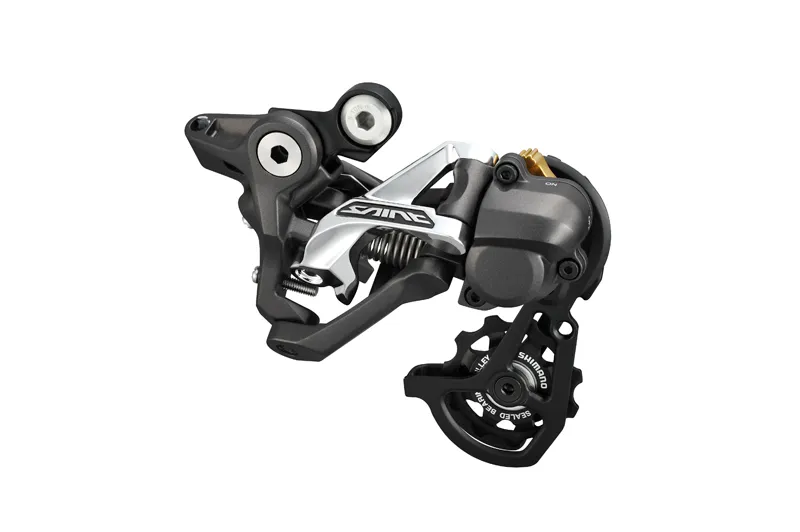
The new Saint rear derailleur uses the Shadow Plus clutch mechanism introduced to XTR last year
Saint doesn't have its own dedicated 10-speed cassette, perhaps because the requirements of downhill, freeride and all-mountain riders are so different. Shimano's UK distributors Madison suggest subbing in either an Ultegra 6700 road cassette (close ratio, good for downhill racing) or a Deore XT unit (wider ratio, good for all-mountain/freeride). The groupset doesn't include a chain either; Shimano's HG94 model is recommended.
Being a downhill/freeride groupset there's no front mech, and Shimano haven't followed SRAM's lead and developed their own chain device. Saint is designed as a 1x10 setup so there's only a right-hand shifter. This features the same Vivid shifting introduced on XTR, which is designed to give a more consistent lever feel across the gearing range.
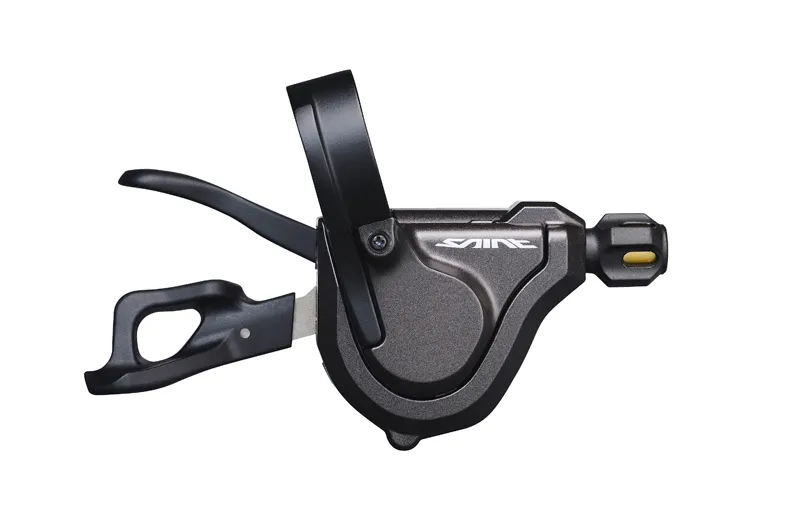
As it's designed around a 1x10 transmission, Saint only has a right-hand shifter and no front mech
The Saint shifter offers Instant Release (shifts as you press the lever, not when you let it go), Two-Way Release (release lever can be pushed in either direction) and Multi-Release (can shift more than one gear with each lever push). The levers themselves are longer than before – the main lever by six percent, the release lever by 10 percent – to give a lighter action. The shifter is available with a fixed bar clamp or with fittings for Shimano's I-Spec handlebar bracket.
Stopping power
The current Saint brakes are still among the most powerful on the market, despite being a four-year-old design. The new M820 version uses the same inline master cylinder/lever design as the latest Deore, SLX, XT and XTR brakes but has double the number of pistons for even more stopping power. As with SRAM's new X0 Trail brake, the pistons are different sizes so as to generate greater clamp force on the front of the pads than the rear.
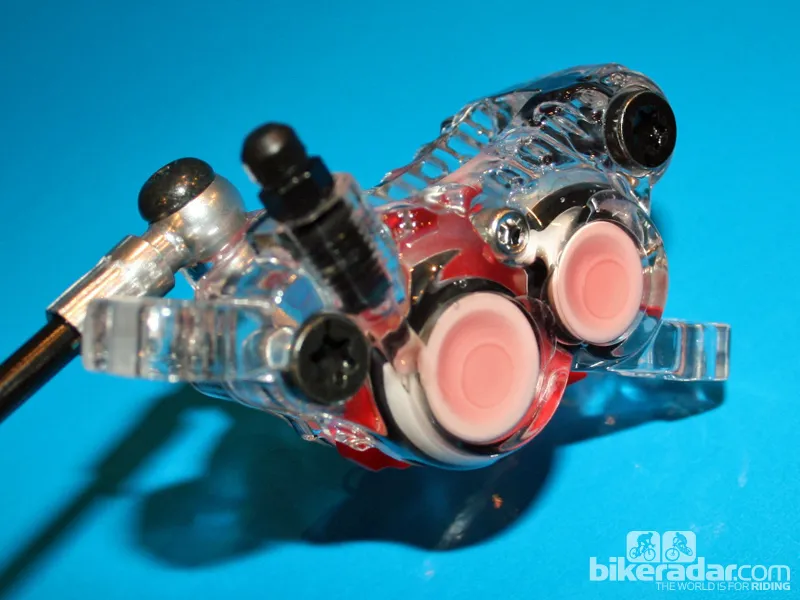
Note the larger front pistons on this see-through model of the new Saint calliper
The one-finger levers use Shimano's Servo-Wave cam system, while the callipers offer one-way bleeding and an extra-long banjo option. Power is no good without consistency, so the brake will come with finned Ice Technologies pads to combat heat build-up on long descents. There's a new RT99 rotor too, which has the usual Ice Tech three-layer 'sandwich' construction but also has fins built into its aluminium core.
These are designed to scoop up passing air and direct it onto the braking surface. Shimano claim a 50 percent reduction in heat build-up compared to standard Ice Tech rotors, 20 percent less fade, more stopping power and longer pad life, too. The RT99 'Ultimate' rotors are available in one size only: 203mm, to fit Center Lock hubs.
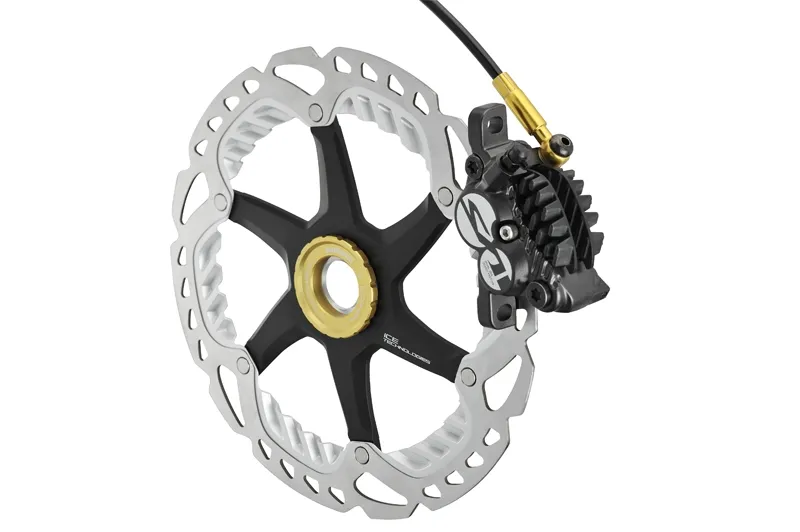
Fins on the pads and rotor are designed to keep the new Saint brakes from overheating on long descents
Pedalling
The new crankset sticks with Shimano's strong but light Hollowtech II design, with a steel axle and pedal inserts for greater durability. It's said to be much lighter than the previous Saint design due to a new chainring spider. It's designed to be used with a single chainring, available in 34-, 36- and 38-tooth sizes, and comes with a choice of 68/73mm or 83mm bottom brackets (an 83mm press-fit version is in the pipeline), and 165, 170 or 175mm arms.
To go with the new crankset is a new flat pedal – Shimano's first since they introduced the venerable MX-30, itself an updated version of the classic DX, more than a decade ago. The MX80 is 3mm wider than the MX30, 8.5mm thinner and comes with longer pins. The platform is also slightly more concave for improved grip and long-ride comfort.
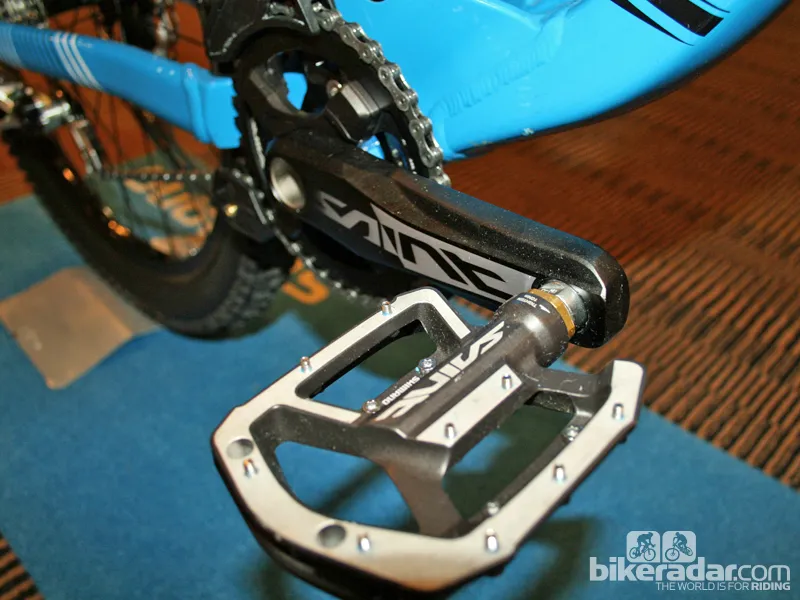
The new Saint crankset uses Hollowtech II arms, as with Shimano's cross-country groups
We'll bring you more information on the new Saint group here on BikeRadar as soon as we get it, including initial ride impressions. Availability is slated for July, except for the RT99 rotor which is due to hit shops in September.
Shimano Saint M820 pricing
Array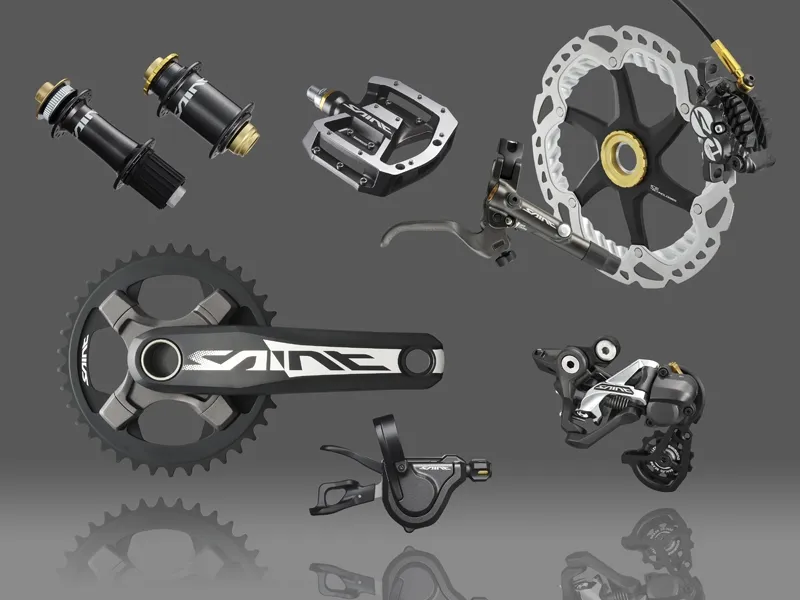
* Groupset price is with an 83mm BB, Ultegra 6700 cassette (£69.99/$99.99), HG94 chain (£34.99/$49.99), 203mm RT99 front rotor and 180mm RT81 rear rotor, and front and rear post mount adaptors (£7/$9.99ea), but no pedals or hubs.
